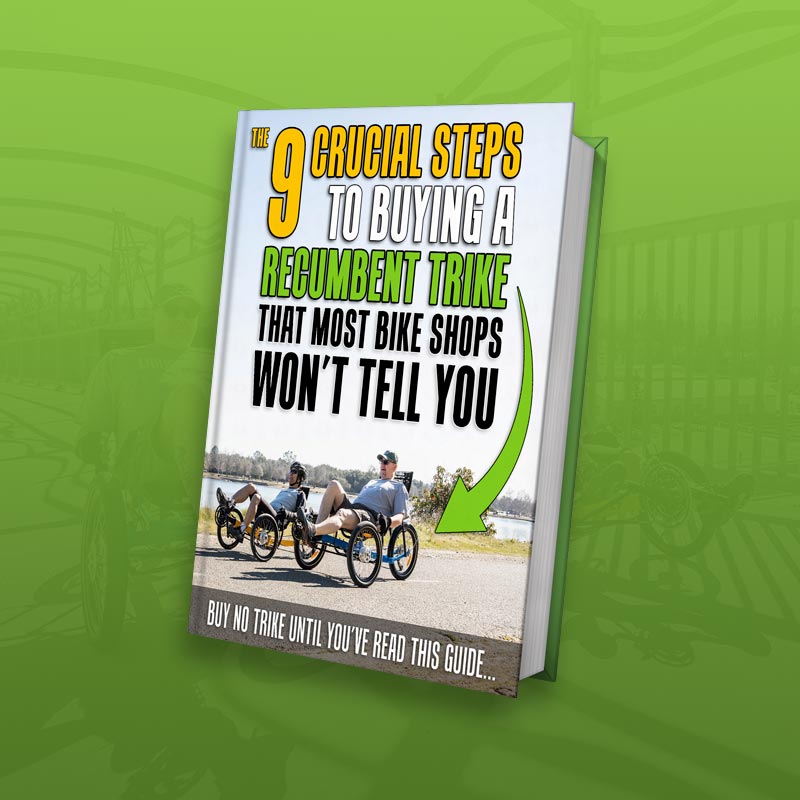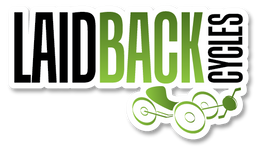Blogs
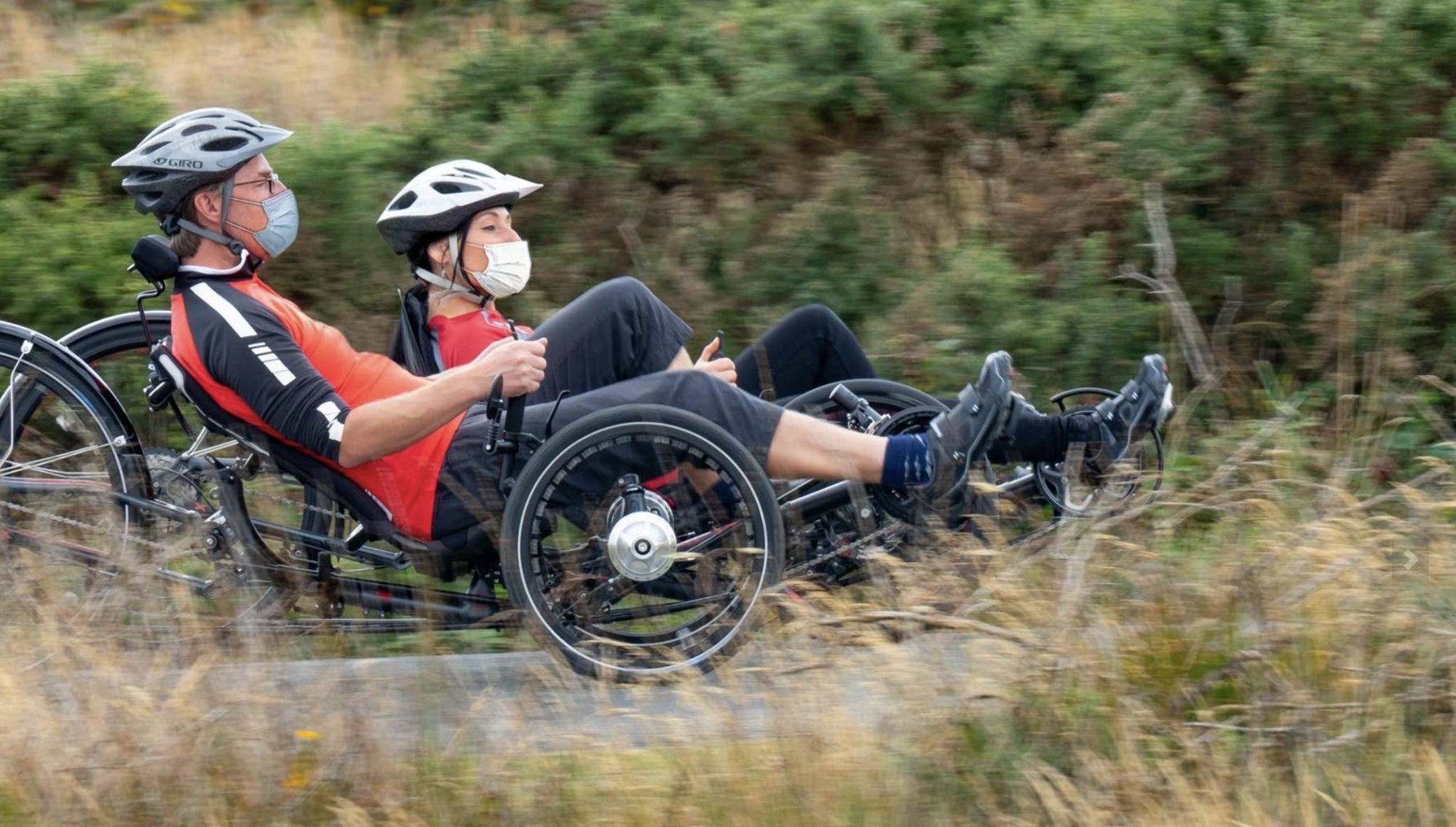
October 25, 2020
Covid Is Affecting The Recumbent Industry
Covid 19 has changed everyone’s life. From the way we socialize to the way we shop, nothing is the way it used to be and new norms are created daily.
Businesses have also been feeling the pinch of declined sales and supply chain issues and it has now trickled down to the bicycle and recumbent bicycle manufacturers. Every recumbent manufacturer is experiencing some sort of supply issues relating to the pandemic, even though bicycle and recumbent sales and demand is up.
It says a lot about how we are coping with the pandemic by wanting to get outside and ride more. In fact, bicycle thefts have skyrocketed in the past 6 months with the lack of available inventory in stores.
“The industry wasn’t running with lots of spare capacity to start with,” said Chris Rogers, the supply chain analyst at S&P Global Market Intelligence.
“What the industry doesn’t want to do is double its capacity to meet the increased demand,” Rogers said, “and then we turn round in the winter or next year when everyone’s got a bike and suddenly you’re left with a factory that’s too big and machinery or staff that aren’t being used anymore.” This is even more true for the Recumbent industry.
Rogers said the bike industry’s troubles are emblematic of a lot of industries right now, trying to tame wild fluctuations in supply and demand.
The good news is that while the Recumbent manufacturers slowly regain their supplies to start back production, many local recumbent shops like Laid Back Cycles have plenty of stock on hand to appease most customers who are ready to purchase.
Give s a call to learn what we have in stock and available for test rides.
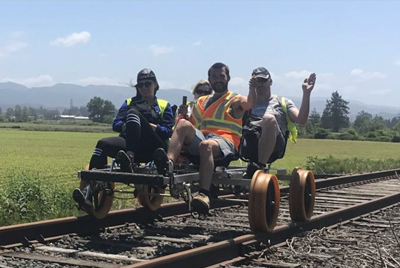
October 04, 2020
Rail Riders
Pedal-Powered Rail Riding… on comfortable TerraTrike seats!
Most recumbent trike riders are familiar with converted rail trails – former railroad lines where the rails have been removed and the rail line is paved. But many people are not familiar with ‘Rail-Riding’!
Rail-riding is unique because it makes use of existing out-of-service railroad lines for pedal-powered adventure! Small pedal vehicles can be ridden down former railroad tracks, providing a great way to experience some stunning scenery, wildlife, and natural habitats.
One of the first Rail-Riding tour companies started in the state of Oregan. In 2014, an Oregon couple kicked off their rail-riding tour business, Tillamook Bay, using sections of inactive rail lines in the northeastern part of Oregon. Tillamook Bay riders pedal small 4-wheeled vehicles on the rails, sitting back in a comfortable position and enjoying the views along the way. Tillamook Bay likens the experience to riding a “four-person recumbent bicycle crossed with a rail car frame!”
Rail Riding is growing in interest across the country and is offered in the Adirondack mountains by Revolution Rail Co. They describe rail riding as being similar to pedaling a paddleboat… but on wheels! Some of the rails that Revolution Rail uses are former freight lines that follow the Hudson River and have never been open to passenger service before, so the views they provide are very unique! They offer both 2 seaters and 4 seaters ‘bikes’, and different length tour options. When you come to the end of the line, the vehicle is turned around on a railway turntable and you head back in the direction you came from.
Rail Riding is very similar to riding a recumbent trike, and we are pleased to see that many of the rail-riding tour companies are making use of the very comfortable TerraTrike seats! Of course, recumbent trike riders already know that riding in comfort is the only way to go!

September 20, 2020
Recumbent Trike Safety Tips
Riding a recumbent trike is fun and easy, but remember to always ride safely. Just because trikes are sturdy and stable on their own, you still have to treat it as if you are riding a regular bicycle. We have created a list of what you need, what to look out for, and how to stay the safest when you’re out riding.
Rules of the Road
While riding on the street, make sure to follow the rules of the road. Be courteous of other drivers and riders and don’t weave in and out of traffic and avoid being hidden by traffic. Look and signal for traffic when turning or changing lanes. Not sure if a car can see you? Typically when they can see you, they will give you up to two car lengths of room because they see your trike as being bigger than it actually is. This is great because you are safer and it reduces the risk of being hit. Remember to always do what is most comfortable for you. It might be the law for all bikes to be on the street and not the sidewalk, but if you are riding in a heavy traffic area and you feel more comfortable riding on the sidewalk, make sure you follow your gut instinct and do just that. If you follow these simple safety tips, you are sure to have a great ride:
Don’t weave in and out of traffic
Look and signal when turning or changing lanes
Always use common sense and follow your instinct
What you Need
Because a recumbent trike is so much lower to the ground than a normal bicycle, it’s best to use safety flags so taller vehicles can see you. That’s easy to do with an assortment of headlights, taillights, and reflectors. There are many different types of lights you can get; including some that can be hooked up to your brakes to give you brake lights and turn signals. Rearview mirrors, horns, bells, reflectors that can flash and attach to your clothing, and pedals that can attach to your shoes so your feet don’t fall off, ensure that you will have the safest ride. Below is a simple checklist of all your riding necessities:
Helmet
Flags
Reflectors
Head and tail lights – Pedals
Mirrors
Horns and bells
How to Ride
Many people are a little skeptical of our trikes because they aren’t sure exactly how to get in and out of it. It’s actually quite simple. Before entering, make sure the locking pins on the brake levers are locked into place so the trike doesn’t move. Next, straddle the boom and begin to lower yourself into the seat while supporting yourself using the tires or the sides of the seat frame. Remember to try and not put weight on the handlebars because they are not a load-bearing part of the trike. When you are finished riding, lock both brakes levers and use the tires, boom, or seat frame to provide assistance when standing up from the seated position. It’s that simple!
Because your trike only has front brakes, make sure you brake slowly using both hands. If you squeeze the brakes unevenly, you can experience brake steer. Also, try not to make sharp turns on your trike; if you turn too sharply, you can roll your trike and seriously hurt yourself. Shifting allows you to maintain a comfortable pedaling cadence while riding over varied terrain. One main concern riders have with our trikes is leg suck. Leg suck is when you are riding your trike and your foot slips off the pedal and gets stuck underneath your trike as you are still riding. We have had customers get injured because of this, but upgrading your pedal options will solve this problem.
Use common sense while riding your trike. Always make sure to try and make you and your trike noticeable in any condition. Wear a helmet whenever you ride and remember to wear bright clothing. Trikes are strong enough for most riding conditions, but that doesn’t mean you can ride it in a hazardous or abusive way. Trikes are stable, but if you try hard enough, you can damage or break it. Here is a small list of things to consider while getting ready to ride:
Inspect trike before every ride
Engage brake locks/disengage by squeezing the brake lever
Lean into the center of your turns
Squeeze brake with both hands
Twist the shifter to what feels comfortable
Try to avoid too much upper body movement; it makes for a smoother ride
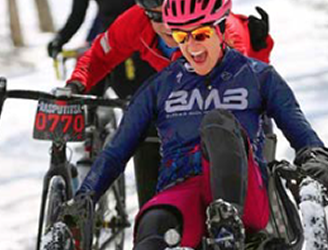
August 23, 2020
Rambler All Terrain Completes Rasputitsa Spring Classic
Lindsay Warner takes on the very challenging Rasputitsa course!
Reprinted from TerraTrike Trailhead – Spring 2018
The Rasputitsa Spring Classic in the Northeast Kingdom of Vermont is described as “a psychotic 45-mile, insane, drop to your knees and cry sufferfest.”
So when Lindsay Warner of Hinesburg, Vermont, made the finish line on a TerraTrike recumbent three-wheeler, she turned a few heads and ticked off a few firsts. According to race organizers, Warner was the first recumbent trike to enter the Rasputitsa Spring Classic. This very likely made a TerraTrike the first recumbent trike to finish any gravel grinder race in the U.S.A. “Gravel grinders are what this trike was designed for,” said Jeff Yonker, marketing director at TerraTrike. “They are a great place for trikers to test their mettle and our hats are off to Lindsay for pushing through this punishing course…and with a broken hand!”
Usually a member of the Barker Mountain Bikes race team based in Maine, Warner rode the TerraTrike this year as a cross-training exercise due to her brokenhand. Hundreds of participants didn’t make the finish line this year, so the fact that Warner made it in lessthan the 6-hour cut-off time is even more notable. She placed 21st in the 30-39 age bracket riding a diamond frame bike at last year’s Rasputitsa.
“I was surprised at how well the trike climbed,” wrote Warner via email. “With the exception of the three snow-covered Class IV roads/mountain bike sections, I rode every hill and never had to get off to walk. It was awesome!”
Started in 2013, Rasputitsa means ‘mud season’ in Russian and has attracted a cult following of riders to the hinterlands of Vermont from 16 states and four provinces of Canada. 1,200 riders participated in 2018.
“I think the coolest thing was that I was actually able to ride some of the snowy sections better than people on two wheels,” said Warner. “Usually when you start to lose traction on a two-wheeler, you tip over… and then it’s game over. Because I didn’t have any balance issues, I could move forward just as long as I could keep turning the pedals over without completely spinning out.”
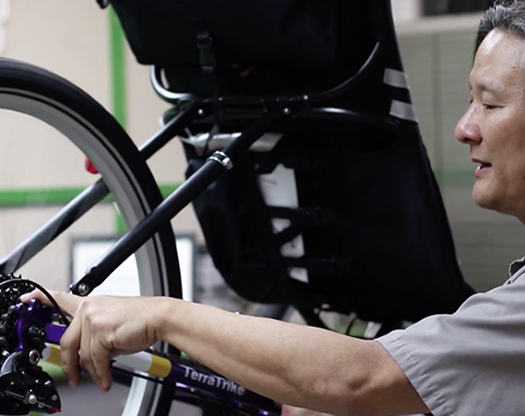
August 16, 2020
Tune Up Time
Keep your trike pedaling smoothly down the trails.
We all want to avoid mechanical problems when cycling, and the easiest way to do this is to make sure your trike is in good working order. A basic tune-up is a great place to start!
Check with Laid Back Cycles to schedule a tuneup. We can look over your trike and make sure that it’s in tip-top shape for the season. Besides being more reliable, a clean, well-tuned trike will be easier to ride, safer, and less likely to have breakdowns in the future. A tune-up is good for your trike and for your peace of mind!
Here Is A List Of Maintenance Items That Are Often Included With A Tune-Up:
Clean and lubricate chain
Check drivetrain systems
Check tire pressure
Check and tighten axles/quick releases
Check brakes
Clean frame and drivetrain parts
Check cables for fraying. Lube cables if necessary
Check steering tension
Check wheels for true/loose spokes
Check seat tightness
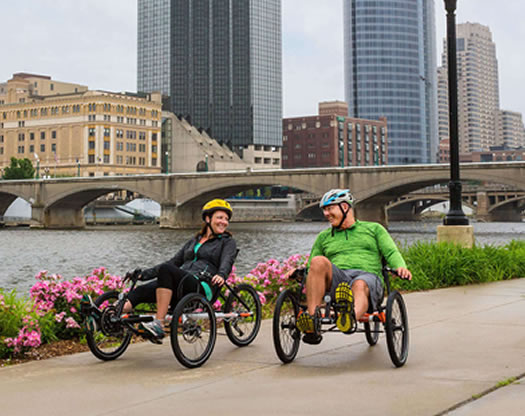
August 02, 2020
Staying Energized On The Trails!
Excerpted from eatright.org by Holly Larson, MS, RD – Nutrition expert, freelance writer, and owner of Grass Roots Nutrition based in Oxford, OH.
Good nutrition is key for maintaining energy throughout your ride, and it’s especially important for longer rides. When exercising, your body is largely fueled by carbohydrates. Some carbohydrates are stored as glycogen in the liver and muscles, but you need to continue adding fuel to your body during a long bike ride.
Starting with a ‘full tank’ and keeping hydrated is important, but the longer you ride and the more hills you power up, the more you’ll need some healthy snacks to keep your energy up. Plan to keep snacks on board for any bike ride over an hour.
What makes a good cycling snack? Here are a few ideas as you pack your lunch kit. Look for foods that will give you energy, are portable, provide your muscles with the nutrients they need, and can’t melt. Pack more snacks than you think you need! Be sure to eat on a regular schedule, such as having a few bites of food and a few sips of fluid every 15 to 20 minutes.
Five super snacks to tuck into your jersey pockets:
Powered by the Peel:Bananas are snacks ready to roll! Known for their potassium, they also contain carbohydrates that help your muscles to use the fuel efficiently. More fuel reaching your muscles means more pedal power for your ride!
Peanut Butter & Jelly:PB&J’s are not just for kids – they are the perfect pocket fuel! The bread and jam (or honey) provide carbohydrates and the peanut butter (or almond butter) offers protein and fats. Cut into quarters and have one piece every 15 to 20 minutes.
Trail Mix:Dried fruits and nuts are a concentrated source of carbohydrates. Dried apricots, prunes and raisins also have potassium. Mix your favorite fruits with nuts and seeds to keep your body supplied with energy, vitamin E and magnesium. If you sweat a lot, choose salted nuts and seeds.
Water Works:If you’re planning to cycle for an hour or less, water is the best way to stay hydrated. If you’re going to be out for more than an hour, or the weather is very hot, carry two bottles, one with water and one with a sports drink. Sip often to stay hydrated and alternate between the two drinks.
Energy Bars:Energy bars are a convenient way to quickly recharge. Look for bars that have whole ingredients such as whole grains, dried fruits, honey and nuts. Select one that has a higher percentage of calories from carbohydrates than from protein or fat.

August 02, 2020
New Catrike ECATS
Go farther, faster and with greater ease aboard an eCAT. At the heart of the eCAT line is the latest in electric assist systems from industry leaders Bosch. The result is a Catrike with the perfect combination of maximum efficiency, comfort and riding enjoyment. The efficient and versatile Active Line Plus electric-assist drive mated to a 1 x 11 drivetrain (11 – 42 cassette / 44 tooth chainring) provides dynamic performance – guaranteeing an authentic riding sensation with minimal pedaling resistance. It delivers active and sporty acceleration even at low cadences, offering powerful assistance as soon as you step on the pedals. In addition, the system’s multi-sensor technology and fast information processing ensure optimum interaction between you and your eCAT.
The Bosch Active Line Plus electric-assist system features four levels of power assistance: Eco – 40%, Tour – 100%, Sport – 180% and Turbo – 270%. Each level also features a maximum drive torque to ensure smooth, gentle acceleration. The Bosch Active Line Plus delivers assistance up to 20 mph and a cadence of 105. Built for derailleur based drivetrains, it features gear shift detection to provide seamless power through the full range of gears
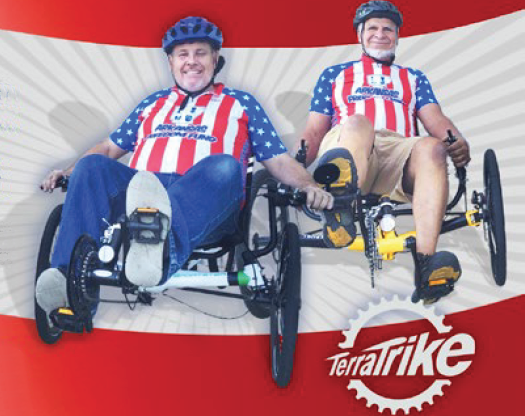
July 19, 2020
The Purpose Driven Ride
100 Mile Trike Ride Benefitting Disabled Veterans
Reprinted from TerraTrike “Trailhead”
In late September 2016, Ben Jones and Phil Pletcher of Siloam Springs, Arkansas, set out on a 1000 mile trike ride to raise funds for disabled veterans. Ben, who owns the Dogwood Junction Bike Shop in Siloam Springs, partnered with the Arkansas Freedom Fund to help coordinate the fundraising efforts.
TerraTrike donated a Sportster x30 for Ben to ride, and Phil rode his TerraTrike Tour II. The ride was named the ‘Freedom Fund’ ride, and the goal was to ride to the TerraTrike headquarters in Grand Rapids, Michigan. Along the way Ben and Phil stopped to speak with various groups, raising awareness and funds for veterans with disabilities.
The guys took lots of photos and posted their progress along the way. They rode bike trails whenever available, but many parts of the ride were on roads, including a stretch on the iconic ‘Route 66’. In spite of some nasty weather, strong winds and pouring rain, they made steady progress. On October 10, a beautiful autumn day, the long journey came to an end as they rode into the TerraTrike headquarters! Sunburned and smiling, they were happy to have accomplished their goal – riding 1000 miles in just two weeks time! Both said it was an amazing trip and they shared some great stories of their adventure. Congratulations Ben and Phil, and thanks for all your efforts!
All of the funds raised from the ‘Freedom Fund’ ride will benefit the Arkansas soldiers and veterans with disabilities, helping them gain mobility and freedom on recumbent trikes. The TerraTrike Sportster x30 that Ben rode was auctioned off and the funds raised went towards the Freedom Fund. Ben Jones and the Dogwood Junction Bike Shop have already helped many veterans regain their mobility with recumbent trikes, and he has witnessed first hand the many benefits and improved health that trikes can provide.

July 12, 2020
The Brain Bucket
5 Reasons to Wear a Bike Helmet
by Andrea Cespedes, Demand Media
Whether you call it a crash cup, brain bucket or road rash repellent, a helmet is an essential part of your cycling gear. The Centers for Disease Control and Prevention reports that 515,000 bicycle injuries required emergency care in 2010. If you become one of these statistics, wearing a bicycle helmet protects one of the most vulnerable parts of your body: your head.
Prevent Head Injury“American Family Physician” reports that head injuries cause the most fatalities and long-term disabilities when it comes to cycling accidents. Approximately 22 to 47 percent of injured cyclists experience head injuries, which are also responsible for 60 percent of all bike-related deaths. A study published in the “Canadian Medical Association Journal” in 2012 looked at the deaths of 129 cyclists between the years 2006 and 2009. The researchers found that not wearing a helmet greatly increased the risk of sustaining a fatal head injury. In a meta-review of six studies published in the “Cochrane Library” in 2008, researchers found statistically significant decreases in mortality, and head injuries occurred in places that instituted helmet laws. An earlier 2007 review of studies on head injury and helmet use published in “Injury Prevention,” concluded that helmets provide a 63 to 88 percent reduction in the risk of head and brain injury for all ages of cyclists.
Set an ExampleAdults, especially parents, who wear helmets when riding set a good example for kids. In the “Journal of Safety Research,” a study published in 2010 found that from 2001 to 2003, just 48 percent of 5- to 14-year-olds wore bike helmets when riding. This age group is at the highest risk of bicycle-related injuries. Older children may be reluctant to wear helmets because they look uncool or are uncomfortable. If you don’t wear one, kids will have trouble seeing the value and importance of wearing a helmet.
VisibilityRiding on the road in traffic presents numerous hazards. Oftentimes, accidents occur because drivers don’t see the cyclist. A bike helmet with reflective strips can make you more visible to motorists, especially in the pre-dawn or early evening hours. Choose a brightly colored helmet so drivers can see you better during the day as well.
Weather ProtectionYou might not plan to ride in the middle of a storm, but weather can be unpredictable — especially if you are riding a lengthy distance. Wearing a helmet also protects you from weather hazards, including intense sun, hail, and rain. Some manufacturers also sell winter helmets that help keep you warm if you ride in frigid temperatures
Avoid a TicketUniversal bicycle helmet laws do not exist in the United States. However, 21 states and the District of Columbia have helmet laws that apply to riders younger than 16 years. Some local ordinances do require helmets to be worn by all riders, regardless of age. Make wearing a helmet a habit so you are always in compliance with the law no matter where you are riding.
Reprinted from livehealthy.com
